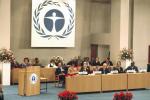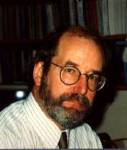_________________________________________________________
Enter the Economists: Part I—Part II—Part III
Summary and Discussion at Bishop Hill
_________________________________________________________
Continuing our look at the Price of Life Controversy, we find how the global sustainability movement influences the IPCC and especially through the re-constituted Working Group III.
But first, here is a brief chronology to guide the reader:
______________________________________
1987 Our Common Future published by the United Nations
1988 The Changing Atmosphere Conference in Toronto (also: Hansen’s Congressional Testimony; Margaret Thatcher gets involved; the IPCC formed)
1990 The IPCC First Assessment Report published
1992 Rio Earth Summit in June introduces the UN FCCC which defers to the IPCC for its scientific assessment. At its 8th meeting (11-13 Nov) the IPCC re-directs its Working Group III to the ‘Economic and Social Dimensions of Climate Change’ for the 2nd Assessment.
1993 The inaugural plenary of the re-constituted WG III (4-7 May) proposes a work plan orientated to the sustainable development goals of the Earth Summit. This is approved by the 9th IPCC meeting (29-30 June) and the selection of lead authors begin.
1994 Four WG III workshops (Jan-July) in Japan, Brazil, Italy and Kenya involving a broader community of experts. A first draft of the Report is circulated for expert review. A revised draft is prepared and circulated for governmental and NGO review and then a final draft is produced before the year is out.
1995 The Price of Life Controversy: with the final draft of the chapters in hand, a lead author’ meeting (Paris 22-24 Mar) prepares a draft of the Policymaker’s Summary for the intergovernmental Plenary and its line-by-line approval process. At the same time, and days before delegates depart for the first Conference of Parties to the FCCC (April, Berlin), India sends a letter [Kamal Nath, 24mar95] to other poor country delegates raising concerns about the damage assessment in Chapter 6. The campaign during CoP1 includes strong words in the India’s delegations official address [Kamal Nath, 6Apr95]. Three months later, the WG III Plenary in Geneva (25-28 July) fails to agree on the Summary nor ‘accept’ the underlying Report. The Plenary reconvenes in Montreal (11-13 Oct) where the Report is accepted and the Summary approved. However, this is only after the Chapter 6 authors have their dissent from a number of points recorded in the minutes. The Controversy continues in the science press with both sides now calling for the removal of the Chapter from the Report before its final submission to the 11th meeting of the IPCC (11-15 Dec). The controversy dies when this meeting accepts the Report and Summary with a minimum of fuss. The Chapter 6 authors never accept the Summary, claiming that its Part 7 contains distortions and interpolations of their findings.
(For the larger context see this Timeline.)
_________________________________________
Channeling Sustainability Enthusiasm

1972: UN Stockholm Conference: Indira Gandhi, Prime Minister of India, links environmental protection with development goals.
The global environment movement bursts onto the world stage in 1972 with the United Nations Conference on the Human Environment. It is here that the seeds of sustainable development enthusiasm are planted and the UN Environment Programme is born.
But the great manifesto of sustainable development does not arrive until 1987 with the UN Report, Our Common Future.
The vision encapsulated in the ‘Brundtland Report’ is to bring together the apparent conflict between economic development and environmental protection as the twin goals in a new global project. Across the world the successive public hearings of the Brundtland Commission attempt to give voice to those previously voiceless in the inter-governmental discourse. Aid workers and environmental activists are actively sought, as are the views of the poor and illiterate living close to nature. Indeed, such folk as Amazonian rubber tappers take to the microphone, and sound bites of their contributions remain preserved in the Report. But ‘equity’ has two dimensions in sustainable development—not only across the globe but also forward through time: Our Common Future also invokes the voiceless voice of future generations so as to ensure that today’s prosperity does not spoil the natural and economic inheritance of those yet to be born.
Riding a wave of enthusiasm generated by the Report, Gro Brundtland headlines a charismatic and prophetic billing for perhaps the most evangelical Climate Conference of all time. The International Conference on the Changing Atmosphere issues from Toronto into that baking North American summer of 1988 a concluding statement that famously begins:
Humanity is conducting an unintended, uncontrolled, globally pervasive experiment whose ultimate consequences could be second only to a global nuclear war.
The Conference Statement [pdf] is primarily concerned with the ‘implications for global security’ of atmospheric damage, and, most alarmingly, the damage caused by greenhouse gases. But the ensuing ‘Call for Action’ is much broader and includes a call for the reversal of the current net transfer of resources from developing countries.
Much to the consternation of the American political right, Climate Change Alarmism has always been much more than about fixing the climate. Even before Rio, the movement for action on global warming has already emerged the great hope and channel for all the aspirations of the global ‘sustainability’ movement—including the aspiration for global economic justice.






